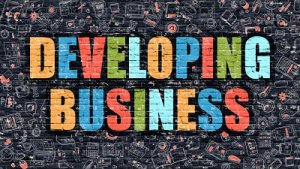The marketing plan recipe
November 14, 2018
 If you’ve been with us lately, you’ll remember that we’ve been hyper-focused on the channels you should be considering as you design your marketing plan for 2019 but I’d like to step back and take a look at the bigger picture.
If you’ve been with us lately, you’ll remember that we’ve been hyper-focused on the channels you should be considering as you design your marketing plan for 2019 but I’d like to step back and take a look at the bigger picture.
In my imagination, your New Year’s Resolution is going to go something like this: “In 2019 we are going to be 110% consistent in our marketing so that we attract the best customers, repel the wrong customers and reassure the customers we already have that they made the right buying decision.”
To make that happen, you need a marketing plan. While there’s no doubt your goals will vary, my goal is to give you a list of ingredients that you can use to build out a plan that you and your team could realistically execute with excellence.
Ingredients:
3-5 SMART goals: There’s no reason to market if you don’t know what you are trying to accomplish. Get them written down and track against them every quarter.
2-3 customer personas: The more specifically you can define your best potential customers, the more effective your marketing will be. Trying to sell to everyone is expensive and inefficient.
1-2 points of differentiation: Why should someone choose you over your competitors? Clearly define what makes you unique. You might need some outside perspective here. It’s challenging to see the label when you’re inside the bottle.
2-3 core messages: Once you know who you’re talking to and how you’re different, tell the story of what makes you unique in a way that will resonate with those personas. No matter how many times you’ve told the story – keep telling it. Find new angles or aspects of the story, but keep emphasizing the key points.
1-2 current customer specific efforts: Before you spend any time or money chasing after a new client – be sure you retain the customers you already have. How do you remind them of the value you provide? How do you show your appreciation for their ongoing business? For most businesses, more than 50% of your net new revenue should come from existing clients, so don’t let them feel forgotten.
4-7 channels that are heavily trafficked by your personas: There’s no reason to invest a lot of time or energy into a channel that doesn’t attract your core audience. Be sure you blend online and offline channels unless your business exists solely online.
2-3 tactics for each channel: Don’t just stop at defining the channels. You need to decide how you’re going to engage in that channel. Let’s say that one of the key channels for one of your personas is a specific trade magazine. That’s the channel. Now, what will you do on that channel? You could pitch a story so they might write about your organization. You could place an ad. You could also buy a booth at their annual trade show or invite the publisher to be on your podcast. Any of those would be a smart tactic for that particular channel.
12 months of calendared items: Odds are good that if you don’t write it all down and plan it out on a calendar, it will not happen. Map out the entire year. Of course, it’s going to change. But far better to edit a marketing calendar than not having one at all because you know it won’t be 100% right. Mapping it out will also help you be sure that you’re going to connect with each persona every week.
Is it as simple as this? No, but even this would be a very good start. Doing this level of planning will put you ahead of most of your competitors. Start here and see what happens. You can always add complexity after you have this down pat.
More









